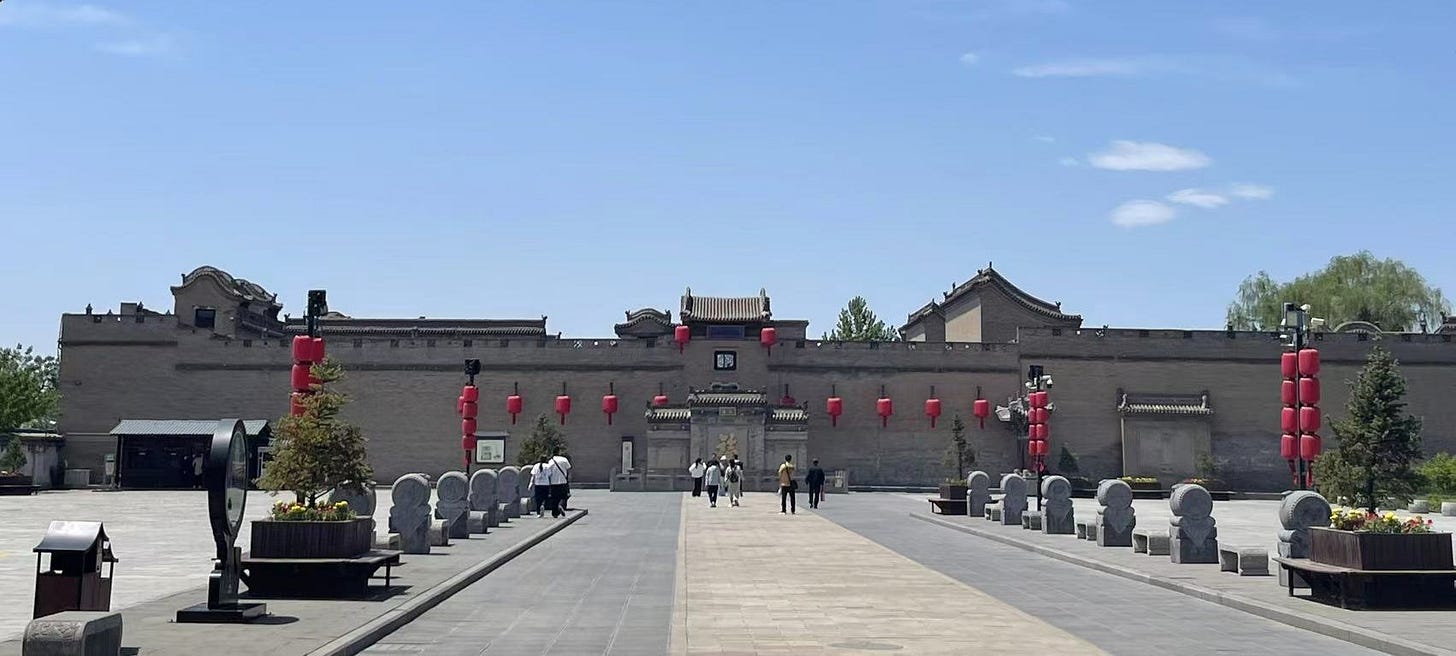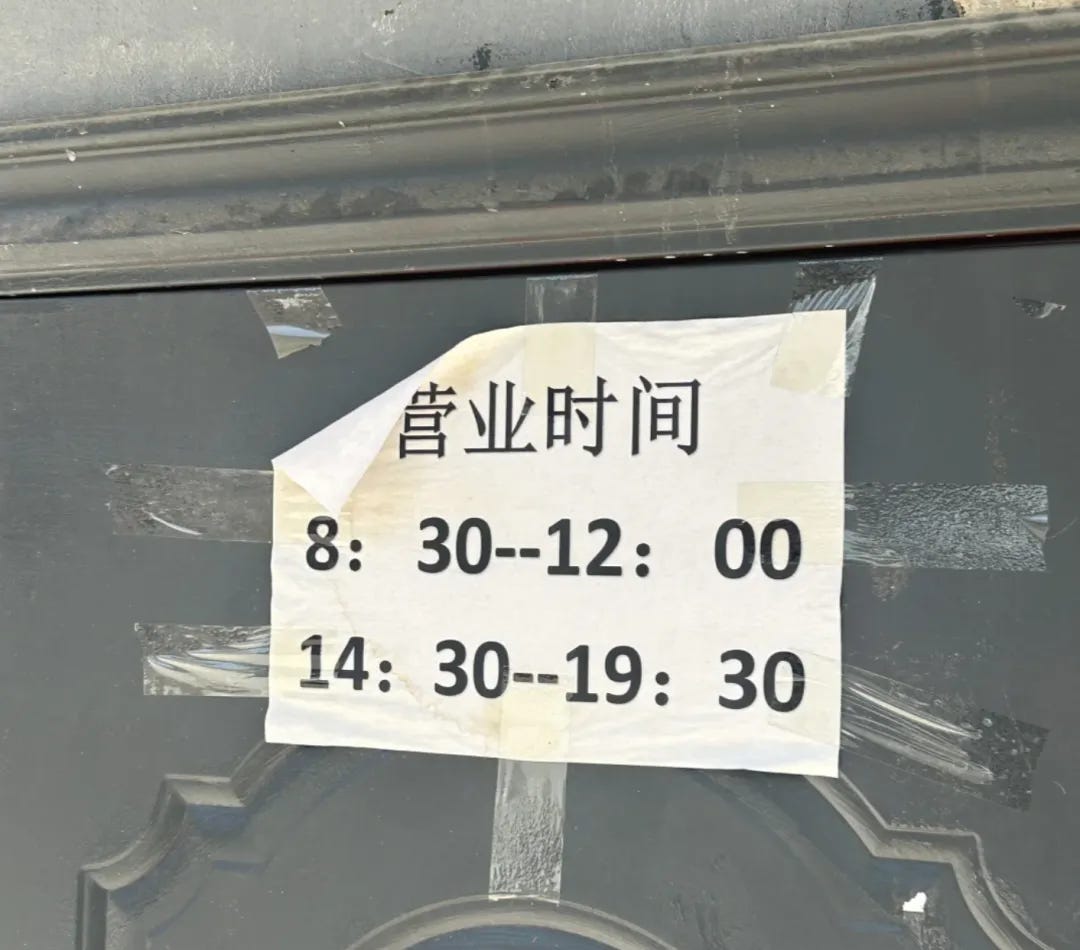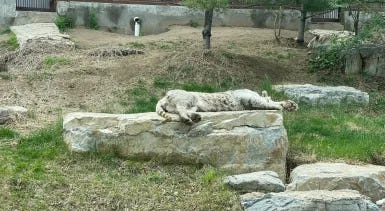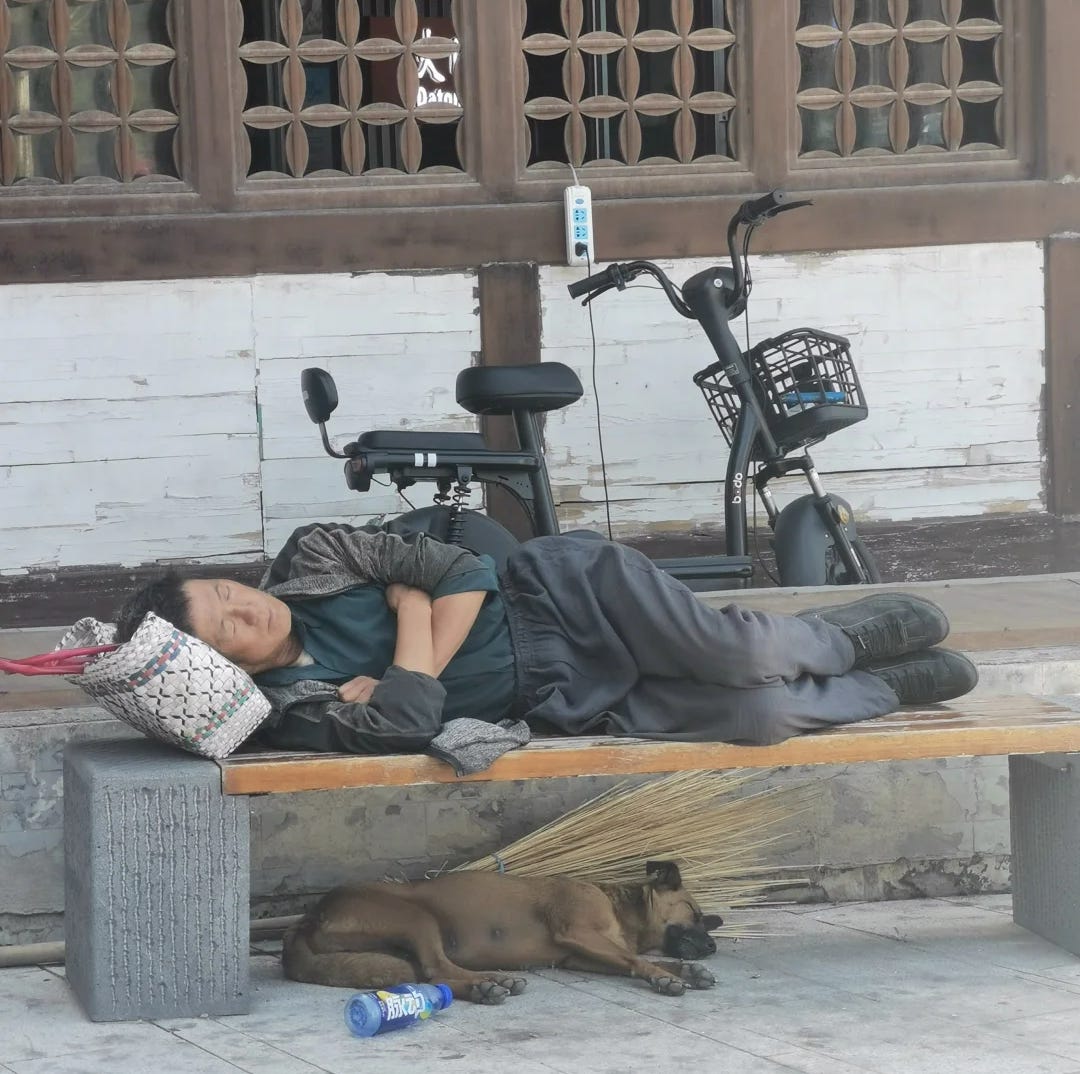The pause that powers a province: Shanxi’s midday shutdown
If you really hate someone, the ultimate punishment in Shanxi is calling them at 1:30 in the afternoon.
Last weekend, I visited Shanxi Province in northern China for the first time to attend a college friend’s wedding. I had long wanted to explore this region, known for its rich coal reserves and industrial heritage, but with limited time, I only managed to squeeze in a brief sightseeing stop. Still, Shanxi surprised me — the cities were cleaner and more orderly than I had imagined.
The Qiao Family Compound (乔家大院), situated in Qi County, Jinzhong, Shanxi Province, is an 18th-century complex of courtyards spanning 24,000 square meters. It is a fine example of a traditional private residence in China. (Photo by Jiang Jiang)
While reconnecting with friends from the area, I came across a delightful local quirk: Shanxi people take their midday naps very seriously. This caught my attention because, before studying in the U.S., I hadn’t realized how culturally specific the practice of napping can be. In many countries, the concept of a daily lunch break nap is virtually nonexistent. But in China, it’s widespread — and Shanxi might just be the heartland of this tradition.
That’s why I want to share with you a piece I came across titled “Why Shanxi people go ‘offline’ every noon? — Mystery solved,” (山西人中午掉线的原因,找到了) originally published on 新周刊 NewsWeekly’s WeChat blog on May 10. Blending humor with cultural insight, the article is full of witty takes on Shanxi’s nap culture and offers a light yet thoughtful reflection on why locals embrace their midday downtime with such devotion.
Beyond the laughs, I think the piece sheds light on a side of Chinese life that often gets overlooked in global media — the side that isn’t all about high-speed trains and relentless productivity. Yes, Chinese people work hard. But they also know how to rest — and sometimes, as this story shows, they insist on it.
For those unfamiliar, NewsWeekly is a lifestyle magazine founded in 1996 that explores the everyday rhythms of life across China. I hope you enjoy this glimpse into a slower, sleepier corner of the country.
Background:
Shanxi, a landlocked province in northern China, blends ancient heritage with industrial might. With an area of 156,000 km²—comparable to Nepal or Tunisia—it’s larger than Greece but smaller than Senegal. Its 34 million people mirror the population of Saudi Arabia or Poland.
Famed for its UNESCO-listed Pingyao Ancient City and the Buddhist Yungang Grottoes, Shanxi is also China’s energy hub, transitioning toward green initiatives. Think of it as a fusion of Poland’s industrial base and Nepal’s cultural depth—all within one dynamic province.
Why Shanxi people go ‘offline’ every noon? — Mystery solved
“When’s the best time to take over Shanxi?”
“Every day from 12:00 to 2:30 p.m. That’s when everyone in Shanxi takes a nap — a full-on collective knockout. You won’t even find a single Shanxi IP online.”
It might sound like a joke, just another internet meme about regional quirks. For a long time, that’s how most people saw Shanxi’s nap culture.
But lately, the legend of the Shanxi siesta has been spreading—and fast.
As more behind-the-scenes details come out, online reactions have shifted from playful teasing to full-blown jealousy.
Check out any post about Shanxi’s midday routine, and the most common (and clearly rhetorical) question is: “Can a local confirm… is this actually true?”
And the most devastatingly casual reply? “Just woke up—what’d I miss? (2:57 p.m. · Shanxi)”
01 Shanxi, Rise and Shine
“Two types of people are affected by the chime of 12 o'clock: Cinderella at midnight, and the entire population of Shanxi at noon.”
First-time visitors to Shanxi often feel like they’ve stepped into another dimension.
“Went to Taiyuan with some friends. We went out around noon to grab something, and the whole city was dead silent. We actually joked that the population must’ve dropped—there was no one in sight.”
“Finished lunch, looked around, and all the waiters who were just joking and chatting a second ago were now passed out at the tables. We seriously thought it was food poisoning.”
Shanxi mystery: Once it’s past noon, every living being seems to fall into a brief coma.
So what is it about this province—home to over 30 million people—that turns it into a ghost town every single afternoon?
Simple — They're napping. Do not disturb.
In Shanxi, napping isn’t just a habit — it’s a primal instinct hardwired into the local DNA from a young age.
Starting in primary school, Shanxi kids grow up with strict summer and winter schedules: in summer, afternoon classes don’t start until 3:00 p.m., and students are required to take a proper nap.
For boarders, school staff conduct nap-time checks. For those who go home, they have to bring back a signed nap slip from their parents to prove they actually rested.
If you want an even comfier nap? Off-campus nap programs are available, like after-school tutoring — but for sleep.
Bottom line: naps are mandatory. So much so that not napping could hurt your chances of being named an “Excellent Student.”
“If someone starts studying during nap time, the whole dorm is stunned — not because they’re secretly grinding, but because they’re not napping.”
And it’s not just kids. By noon, the working crowd in Shanxi is just as committed to their midday rest.
If conditions allow, they’ll pull out foldable beds from under their desks. The office lights go off, and everyone’s sprawled out like it’s a sleepover.
If conditions don’t allow, they make it work — throwing blankets in their car trunk, then heading down to the parking lot to nap like there’s no tomorrow.
As long as it’s nap time, location and setup don’t matter.
The grass in public parks turns into luxury mattresses. Scaffolding at construction sites becomes five-star bedding. Street vendors lean back on their trikes and doze off, with whole carts of watermelon left unattended.
Netizens can’t stop raving about this effortless, zen-like vibe. Shanxi folks really are built different — born with the “nap body.”
But while everyone’s marveling at this chill superpower, some netizens have started getting tactical, analyzing it with a straight face: A strategic study on the feasibility of taking over Shanxi during nap hours.
First to fall: The security system
Come noon, Shanxi collectively logs off. Everyone enters nap mode, and the province slips into its most defenseless state of the day.
And when we say everyone, we mean everyone. Shanxi’s legendary nap culture transcends species. From house pets to zoo animals, cats, dogs, lions, tigers—all knocked out cold at the same time.
By noon, there’s virtually no carbon-based life activity left in Shanxi.
Security system offline.
“I once visited the Taiyuan Zoo at noon—could hear wild boars snoring.”
“The hippo looked fake it was so still. I stared for 15 minutes before its ear twitched. Only then did I believe it was alive.”
City operations? Also on pause. If you’re moving around during nap hours, your odds of being spotted are basically zero.
Sure, eating is important—but in Shanxi, meals only happen during designated meal hours. Miss that window, and good luck.
“Tried to order authentic Jin cuisine while traveling in Shanxi. Placed a delivery order at 2 p.m.—the restaurant called to ask me to cancel it. Tried again at another place, and it said delivery starts after 5:40.”
“Eventually gave up and went out to look. Found a tiny shop still open. The owners waited until I finished eating, then locked the door the moment I stepped out. They didn’t even bother washing my dishes.”
Basically, no one’s out and about at that time—not even locals.
Even delivery hubs go dark during nap hours.
“Let’s put it this way—don’t expect to pick up anything from a Shanxi courier center at noon.”
Public restrooms? Also closed. Because, sure, nature calls—but not louder than a midday nap.
Hospitals switch to emergency-only mode.
Museums and libraries? Closed. Malls shut down their escalators, subtly nudging any stragglers to go home and get some rest.
If you want to get things done in Shanxi, morning or evening works just fine. But try it at noon? Forget it.
After breaking down all the intel, one netizen proposed a detailed “takeover” plan:
“March in at 1 p.m., two hours flat—mission accomplished.”
To which locals kindly replied: “Nice try. You’ll need a ticket to get in—trains from Taiyuan don’t even sell tickets before 3 p.m. (or 2:30 if you’re lucky).”
And even if you do arrive on time, think twice: “Shanxi folks waking up from a nap are pure rage. You sure you want to fight them then?”
02 Shanxi — There’s Something in the Air
Locals are skeptical that outsiders could ever sneak in and “conquer” Shanxi.
Most people feel it as soon as they cross the border. There’s something in the air—something… sedative.
“Any bus, train, or high-speed rail headed for Shanxi? By 2 p.m., the whole carriage is dead silent.”
Call it what you will: "Lie down with lions, wake up groggy.” "When in Shanxi, snooze like the Shanxi."
The true power of Shanxi’s nap culture? Once it gets you, there’s no going back.
“I’m from Shanxi but live in Shanghai now. Still can’t shake the habit. I eat lunch and immediately black out.”
In Shanxi, even your soda bottle knows the drill—it lies down too.
Tourists visiting Shanxi usually don't last two days before syncing up with the local nap schedule—and once they do, there's no going back:
“Spent the morning exploring the grottoes, then went back to the hotel for a nap. Woke up and strolled through the ancient city—this rhythm is amazing. I’m doing this on every trip from now on.”
What makes Shanxi’s nap culture truly next level is that it doesn’t just spread between people—it jumps species.
“My dog was bought in Hebei—super energetic before. After we brought him to Shanxi, he started dozing off right on schedule every afternoon.”
Even though the fame of Shanxi’s nap culture has started to spread, no one does it with quite the same ritualistic dedication as the locals.
Desk naps, chair naps, lying-down naps—those are just beginner levels of comfort.
A real Shanxi-style nap includes: drawing the curtains, changing into pajamas, covering your belly, setting an alarm—every step is essential.
“If there were only one leaf left in the world, it’d be used to cover a Shanxi person’s stomach during their nap.”
Give them a set time and a solid routine, and the whole province powers down. Empty-city mode: activated.
Once nap time starts, the question isn’t “Should you disturb a Shanxi person during their nap?”—the answer is no. The only real debate is how badly that’ll go for you.
In Shanxi, napping is sacred. Interrupting one is basically a personal attack.
“Standard nap protocol: Wi-Fi off, data off, phone on Do Not Disturb.”
Even the rowdiest kids know better than to mess around during nap time.
“Your body clock and your mom’s feather duster will both remind you who’s really in charge of your body.”
Shanxi folks quietly uphold a mutual “nap-time non-aggression pact.”
“Even if a married couple is fighting, they'll argue in the morning or evening—never at noon.”
“Ran out of bottled water just after noon. Waited until 3pm to call the delivery guy. That’s just basic manners.”
No yelling. No dropping by unannounced. No funny business. That's the minimum respect a nap deserves.
Even the language reflects how seriously it’s taken: the phrase “in the middle of the day” (“大中午的”) holds as much emotional weight as “during the New Year”.
So yeah—don’t mess with a Shanxi person’s nap.
“Call me in the middle of my nap? I’ll clap back and block your number.”
And if you really hate someone? The ultimate punishment in Shanxi is calling them at 1:30 in the afternoon.
03 Who’s Not Envious of Shanxi’s Nap Culture?
Whether or not there’s some kind of tranquilizer in the Shanxi air is still up for debate.
But why napping seems to be written into Shanxi people’s DNA? That, at least, has been studied.
One of the biggest reasons is dietary—something researchers have dubbed the “carb coma theory.”
Unlike the rice-growing regions in the south, Shanxi’s terrain is more suitable for wheat, grains, and potatoes. Naturally, locals developed a carb-heavy diet centered on noodles, buns, and starchy dishes.
As the saying goes: “Better to go three days without meat than a single day without noodles.”
Shanxi has so many noodle varieties you could eat a different one every meal without repeating. And potato-based specialties are everywhere.
The result? Carb + carb = blood sugar spike = glassy eyes, wobbly limbs—Shanxi transforms from “coal capital” to “carb coma central.”
“It’s like my brain refuses to function unless I nap. Even one second longer without sleep and my head feels numb and woozy.”
But wait—other carb-loving provinces like Shaanxi and Henan don’t nap like this. Why not?
Climate’s also a factor.
Located in northern China, Shanxi experiences big temperature swings between day and night. Those midday heat spikes in summer make staying indoors—and napping—especially appealing.
Skip your nap, and you’re looking at nosebleeds, sore throats, even mouth ulcers.
Basically, napping equals survival.
But it’s not just nature—nurture helps too. Shanxi’s urban design actively supports this nap-friendly lifestyle.
Unlike many cities that concentrate office buildings in a single CBD, Shanxi’s cities spread them throughout town.
So locals often live close to where they work—no need for long, exhausting commutes.
In fact, Monitoring Report on Commuting Time in Major Cities, a 2020 report on commute times ranked Taiyuan, Shanxi’s capital, as having the shortest average commute out of 36 major cities.
The average commute? Just 7 kilometers. And the commuting time is the shortest among all cities with over 3 million urban population.
Some say that Shanxi people’s devotion to naps is like a needle that pops the balloon of our urban stress.
Truth is, naps used to be very common all over China.
According to the Chinese Sleep Research Society, over 60% of people surveyed in Shanxi, Chongqing, Anhui, and Guangdong still take regular afternoon naps.
But as work and life got faster, that restful tradition slowly faded elsewhere.
As the rhythm of work, study and life quickly picks up, urban dwellers are gradually deprived of rest time.
Now, as people rediscover the joys of a good nap, they jokingly frame it as “conquering Shanxi”—when really, it’s a heartfelt wish to bring this amazing habit back. “Elite provincial culture. Should be rolled out nationwide.”
Because sometimes, it’s hard not to envy Shanxi’s chill afternoon energy.


















A great piece Jiang Jiang, love the humour and the pics. Yes, carbo laden luches have that effect on so many people.